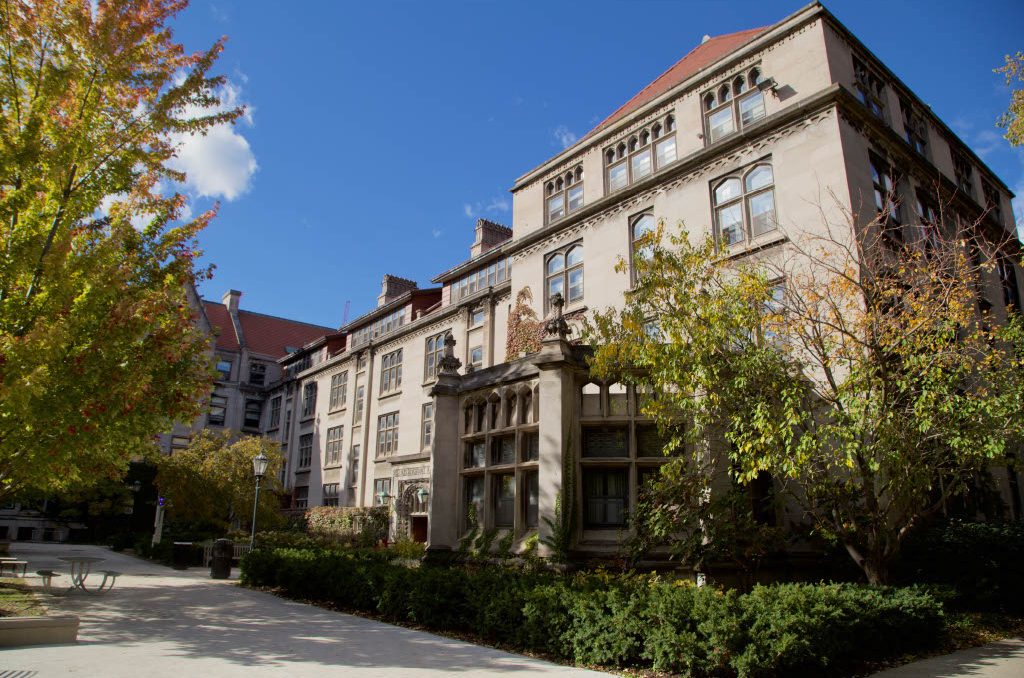When I applied to this school, the only thing I knew about the U of C was what I could deduce from the publications that accumulated in my collection of viewbooks and college brochures. There was a time when I believed that the merits of a school were manifest in its viewbooks, and certainly something about the elegantly typeset, maroon-and-white UChicago cardstock made the school stand out. Maybe it was the hokey text that suggested wittiness was as ubiquitous on campus as on the pages of the “Life of the Mind;” or maybe the College Programming Office simply did an excellent job at creating a comprehensive U of C aura, one of a quirky, learning-obsessed institution. Whatever it was that caught my attention, I bought into it.
Others I’ve talked to have applied to schools knowing just as little. In deciding which applications to complete, vague feelings about schools turn into atmospheres; the well-composed people standing in front of ivy-laden buildings, the modern design of the slick pages, the catchy rhetoric—it all solidifies into something three-dimensional, an idea about a school that suddenly has depth. And this is what we use to determine where we spend the next four years of our academic and social lives.
Certainly we rely on the hard facts and statistics to reassure us in our decisions, but the impetus is organic and just a bit too nonspecific to articulate. I still struggle when asked by family members or friends “Why’d you decide on Chicago?” and end up relying on de facto responses about quality of education and student-to-teacher ratio.
We believe that there’s something about a college’s culture that is abundantly present in its aesthetic; if not the viewbooks, then the look of the campus, or the attractiveness of the students. These are the subconscious ports of infiltration into our decision-making, and certainly they’re being used to their extent in the marketing of higher education just as they are in marketing Coca-Cola. But can a school be blamed for trying to present itself as pleasantly as possible?
Certainly not, but we have to acknowledge that there is no unifying concept or color scheme to any idea or institution.
During my application process, the most influential resources in deciding where to apply were CollegeBoard and Wikipedia: CollegeBoard to ensure that I was applying to schools that I had a chance of getting into and Wikipedia to deduce anything I could about the feeling of the place. Was it respected? Was the city interesting?
This is how I systematically went through the top 100 lists: I searched out parameters, compiled lists, and, like a hypochondriac surfing WebMD, continuously convinced myself that I had found my dream school. But my impressions were paper-thin and fleeting, simply because the language of college applications is the same as that of buying a car: All-inclusive stereotypes and idioms are rampant, and the line between misinformation and inaccuracy is heavily obscured.
I only truly became aware of the ignorance and uncertainty of determining which school to apply to a couple weeks ago while hosting a prospective student for a night. He knew only bits and pieces about the College; he knew that there was a lot of work, that there was something called the Core, but, regardless, Chicago was his top choice. It dawned on me that the College’s response to his lack of an adequate picture of the school was to give him even more brochures, send him on campus tours, and have him spend a night in the dorm, an experience extremely subjective in nature. Being a “prospie” means being subject to the whim of a student for 24 hours. Whether or not a prospective student has a good experience is often entirely independent of what the actual school is like, and instead reliant on what their host believes constitutes a good time on a Friday night.
So what, then, should our decisions be based on? Higher education is an industry, after all, and we are being sold a product. If we can’t trust the aesthetics, or even an event as seemingly expository as a night at the school, how do we evaluate what is right?
The principal problem in college applications, in my very limited experience, is that we don’t realize that colleges are trying to sell us something; they’re trying to sell us an education, a culture, an academic identity. Most of our ideas about a university are direct from an Office of Undergraduate Admissions, so certainly we must be wary of the ivy. I think the only thing we can do is read everything, from every angle and every source, and compile an aggregate idea of what it really is to be a student at a particular school, because there is so much that is lost between the lines of viewbooks, as well as the Princeton Review.
— Steve Balogh is a first-year in the College.







